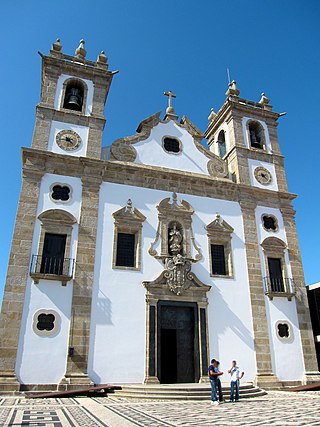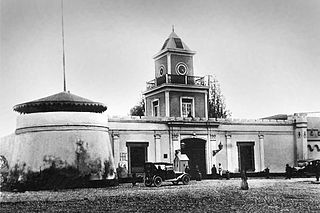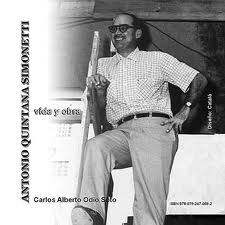
The Kavanagh Building is a residential skyscraper in Retiro, Buenos Aires, Argentina. Designed in 1934 by architects Gregorio Sánchez, Ernesto Lagos and Luis María de la Torre, it is considered a pinnacle of modernist architecture. At the time of its inauguration in 1936, the Kavanagh was the tallest building in Latin America surpassing the Palacio Salvo built in Montevideo, Uruguay in 1928, as well as the tallest building in the world with a reinforced concrete structure.

Lui Seng Chun is a Grade I Historic Building located at 119 Lai Chi Kok Road, in Mong Kok, Hong Kong, at the junction with Tong Mi Road. It is a four-storey tong-lau that was built in 1931 by Mr. Lui Leung. The architect was Mr. W. H. Bourne.

The Confitería del Molino is an historical Art Nouveau style confitería (coffeehouse) in Buenos Aires, Argentina, located in front of the Palace of the National Congress and the Congressional Plaza, on the intersection of Callao and Rivadavia avenues in the barrio of Balvanera.

The architecture of Mexico reflects the influences of various cultures, regions, and periods that have shaped the country's history and identity. In the pre-Columbian era, distinct styles emerged that reflected the distinct cultures of the indigenous peoples of Mexico, particularly in the architecture of Mesoamerica. During the colonial era, the region was transformed by successive styles from Europe. With the foremost style during this era being Mexican Baroque.

The Key Largo is a famous cultural center place in San José, Costa Rica where multiple cultural and artistic activities are carried out for the whole family, it has a restaurant, cafeteria, gardens and spaces for the development of events, fairs and more...

The Antiguo Casino de Ponce, or simply the Casino de Ponce, is a historic structure, built in 1922 and located in Barrio Cuarto, Ponce, Puerto Rico. Originally built as a social club for Ponce's elite, it is currently used as the premier reception center of "The Noble City of Puerto Rico". The building, designed by Agustin Camilo Gonzalez in the Second Empire and Neo-Rococo styles, has a French facade and tones. It was listed in the National Register of Historic Places on 28 October 1987. It is located at the corner of Marina and Luna streets. The building has been called "an icon of Ponce's architecture, history, and identity." It is owned and administered by the Ponce Municipal Government. In 1936, during the Great Depression, the Casino declared bankruptcy and shut down. It subsequently had various uses: a postal office, a public health unit, tax collector's office, and even a temporary city hall. In 1990 it was restored by the Ponce Municipal Government, and has since been used for high-ranking official municipal business. For example, it was here where the dinner to honor Prince of Asturias, His Majesty Felipe de Borbon, took place.

The Bacardi Building is an Art Deco Havana landmark designed by the architects Esteban Rodríguez-Castells and Rafael Fernández Ruenes and completed in 1930. It is located on the corner of Calles Monserrate and San Juan de Dios on a 1,320 m2 (14,200 sq ft) lot in Las Murallas, Old Havana.

The architecture of Póvoa de Varzim, in Portugal, demonstrates a broad variety of architectural styles over its thousand years of history. 11th-century Romanesque, 16th-century Mannerism, 18th-century Baroque, late 18th-century neoclassicism, early 20th-century Portuguese modernism and late 20th- to early 21st-century contemporary architectural styles and more are all represented in Póvoa de Varzim. As a whole it represents a rich eclectic tradition and innovation shaped by the people, their beliefs and economy.

The National Bank Building also known as the Corner House is situated on the corner of Market and Simmonds Streets in Johannesburg. The address 38-40 Simmonds Street corresponds to Stand 205 F.

The architecture of Brazil is influenced by Europe, especially Portugal. It has a history that goes back 500 years to the time when Pedro Cabral arrived in Brazil in 1500. Portuguese colonial architecture was the first wave of architecture to go to Brazil.

The Caramuru Building is an office building in Salvador, Bahia, Brazil. It was designed by the architect Paulo Antunes Ribeiro (1905–1973) for Prudência Capitalização, an insurance company. Construction began on the structure in 1946 and it opened in 1951. The Caramuru Building was one of the first Modernist buildings constructed in the Northeast Region of Brazil, closely following the construction of Hotel de Bahia. It was widely recognized by the domestic and international architectural press; it was described as having a "graceful, almost abstract elegance [...] contrasted with the robust architecture of Bahia." The structure fell into disrepair but remains in the Comércio district. It is a protected structure by the state of Bahia and has provisional protected status by the by National Institute of Historic and Artistic Heritage (IPHAN).

Valencian Art Nouveau is the historiographic denomination given to an art and literature movement associated with the Art Nouveau in the Valencian Community, in Spain.

The Fort of Santa Catalina in Lima, Peru, is a Neoclassical style building that partly survives and it is in a good condition, and it is one of the few examples representative of the military colonial architecture that still exists in Peru. Its remaining premises host the Escuela Taller de Lima and feature the original outerwalls, as well as a chapel known as the Chapel of Saint Barbara.

182 Cumberland Street, The Rocks is a heritage-listed retail building and residence located at 182 Cumberland Street, in the inner city Sydney suburb of The Rocks in the City of Sydney local government area of New South Wales, Australia. It was designed by Walter Liberty Vernon with the assistance of E. L. Drew and built from 1911 to 1912. The property is owned by Property NSW, an agency of the Government of New South Wales. It was added to the New South Wales State Heritage Register on 10 May 2002.

Architecture of Cuba refers to the buildings, structures and architectural history throughout the Caribbean island nation of Cuba. The unique mix of cultural and artistic influences throughout history have led to Cuba being renowned for its eclectic and diverse architecture, which can be defined as a unique fusion of numerous well-studied architectural styles from around the world.
The architecture of Costa Rica includes remains from the pre-Columbian Era, all the way to modern buildings that form part of the nation's contemporary infrastructure. The nation encompasses an array of historical buildings from both the pre-colonial era and post-colonial era, such as Guayabo and the Basilica of Our Lady of the Angels. The contemporary architectural scene in Costa Rica has also captured global attention, exemplified by structures such as Casa Flotanta. Architecture in Costa Rica is reflective of the nation's environmental conservation policies. This is reflected in the distinctive and extensive presence of canopy bridges throughout the nation, constructed in the aim of preventing rainforest destruction.

The Edificio de la Comandancia en Jefe de la Armada de Chile, also known as Edificio de la Intendencia de Valparaíso, because it was a purpose-built Intendencia, is a building designed in an eclectic style with Renaissance Revival architecture elements, which rises 5 floors in height and covers 8,000 square metres (86,000 sq ft). The main facade of the building faces the Plaza Sotomayor of Valparaíso and the Monument to the Heroes of Iquique.

The Bank of Spain building is an eclectic early-20th-century building in the Spanish city of Pontevedra.

Antonio Luis Quintana Simonetti was a Cuban architect and a forerunner of Modern architecture in Havana. Quintana graduated from the University of Havana in 1944, among his works are some of the most important modernist buildings in the capital. Dissatisfied as a student with the classical canons, Antonio Quintana participated in 1944 in the so-called "Burning of Vignola" in the courtyard of the School of Architecture of the University of Havana. From this date forward, he began to study the precepts of contemporary architecture. He graduated as an architect in the same year.

The Sampaio Moreira Building is located at 346, Líbero Badaró street, in the central region of São Paulo. With twelve floors and 50 metres (160 ft) high, the building was named Sampaio Moreira after its owner José de Sampaio Moreira (1866–1943), a merchant who the architect Christiano Stockler convinced in 1920 to make the building that would complete the Anhangabaú Park monument, which was finished four years later.




















